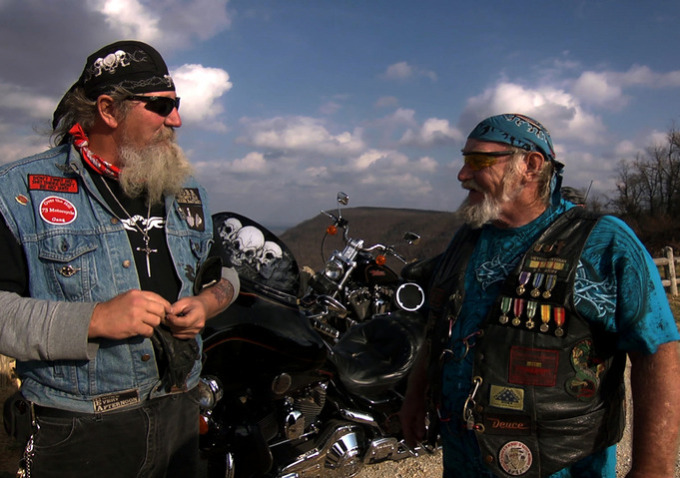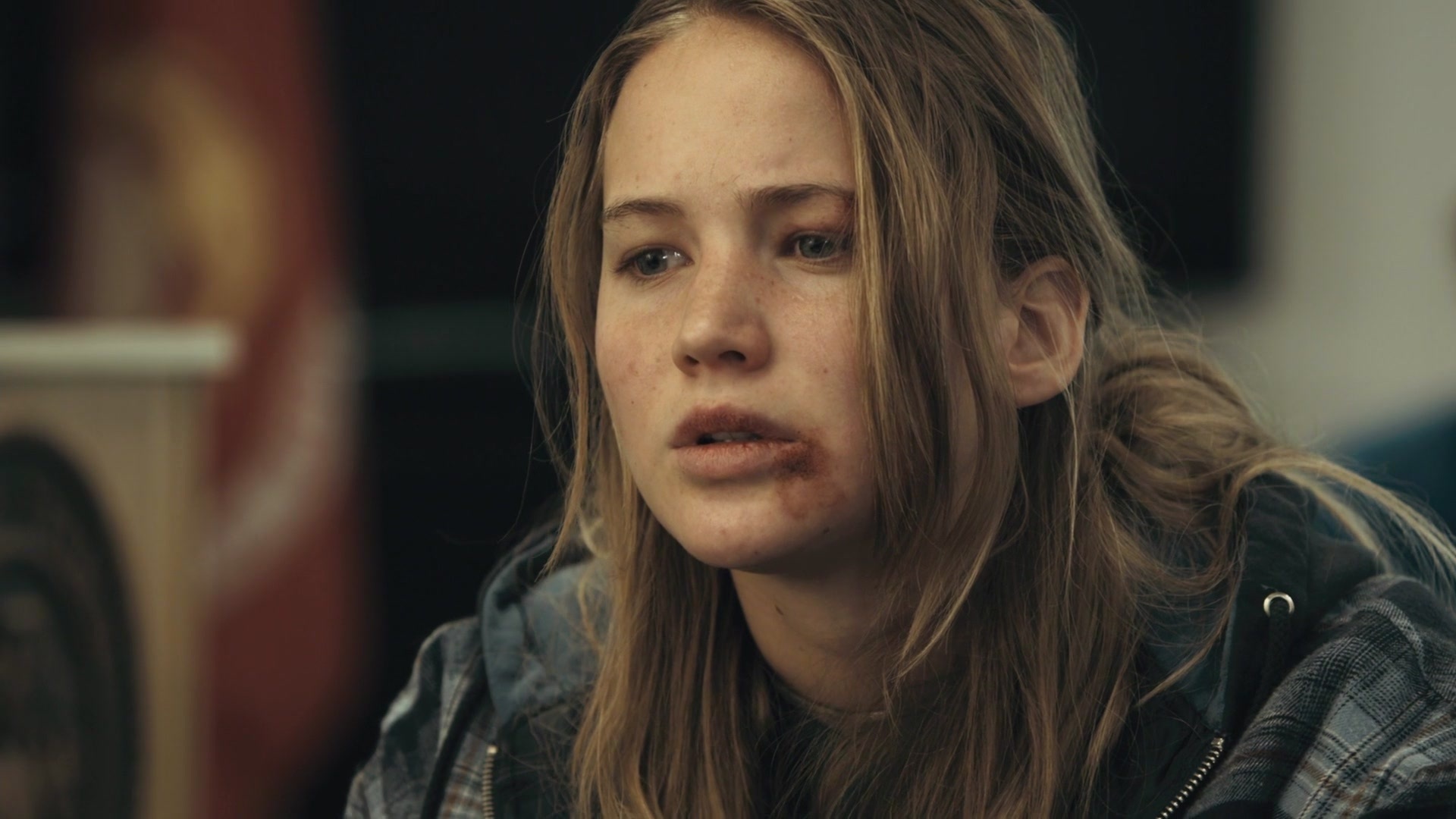By providing your information, you agree to our Terms of Use and our Privacy Policy. We use vendors that may also process your information to help provide our services. This site is protected by reCAPTCHA Enterprise and the Google Privacy Policy and Terms of Service apply.
Debra Granik on Following Up ‘Winter’s Bone’ With a Documentary and Possibly Reuniting With Jennifer Lawrence
Melina Gills

A self-described child of the northeast corridor, Debra
Granik has nevertheless dedicated her last two films to the small town
struggles of the Ozark backwoods.
In the first — 2010’s stirring, Academy Award
nominated “Winter’s Bone”–, Ronnie Hall convincingly portrayed the dangerous drug
supplier sought by the protagonist (Jennifer Lawrence, in her breakout role) in
a longer journey to find her father. Hall is now the charismatic centerpiece of
Granik’s first venture into documentary filmmaking, “Stray Dog,” named for its
subject’s nickname. Granik continues to display an impressive eye for
captivating protagonists, and Hall is as watchable and magnetic as Lawrence. Rising
out of the drug underworld, Granik here remains focused on the minutiae of
rural life, while extending her thematic reach to the trauma of war as well as the
struggles of adapting to life in the United States as both an immigrant and returning
soldier.
A consistently engaging account of Hall’s experience as a
Vietnam War veteran, “Stray Dog” premiered at the Los Angeles Film Festival and
took home the event’s prize for Best Documentary Feature. The film follows Hall through
a definitive and transitional moment in his life, when he is finally coming to
terms with combat guilt—tearfully recalling to his therapist having worn an
“enemy” ear around his neck—and embarking on a new life with his Mexican wife of
two years and her twin sons, who immigrate to the States midway through the
documentary. The honest, sharp Hall becomes an intriguing gateway to a
multifaceted, insular and little-seen community.
READ MORE: Debra Granik’s Doc ‘Stray Dog’ A Sensitive Portrait of Memory, Trauma, and Biker Culture
“Stray Dog” recently screened at the Maine International
Film Festival, where Granik conducted a lively post-screening Q&A with a
highly responsive audience. Viewers were eager to learn how she had become
interested in Ronnie, his response to the film, and the current state of his
stepsons. A war vet thanked her for her honest, critical, and yet nonjudgmental
portrayal of the vet experience, emphasizing that he did not agree with many of
the characters’ self-aggrandizing patriotism. One of the most fascinating elements
of the film is Ronnie’s own constant attempt to reconcile his severe criticism
of the government and war—at one point telling his wife that rich old men wage
wars while poor young men fight them—and his dedication to improving the lives
of veterans, often attending military events that romanticize the flag and “American
freedom.”
Granik spoke to Indiewire on the various stages of
developing the project, which was filmed over three years and edited over ten
months, and treading that thin line between narrative and documentary forms. We
learned, for example, that it was not until late in production that the
decision arose to include no interviews or voice over and that she had
attempted but ultimately failed to reenact Hall giving his dog CPR. She also
gave us hope for a promising reunion; having given Lawrence perhaps the best
role of her career, which has since then flourished with an Oscar win for “Silver
Linings Playbook,” Granik says a potential second collaboration is a definite possibility.
The film’s editor, Tory Stewart, joined Granik for the following interview.
When you first met
Ron, what most drew you to him? How did you know he would make this great
subject?
Debra Granik: You don’t know until you try and film a kind
of sample. Filming a little with him is what gave us a feeling that we could do
something with him, develop it, and learn more about him. There were a lot of
themes in his life that were rich, loaded, and unexpected to us. You can see
someone in a setting and make assumptions about them, but it is not until they
start to tell some anecdotes and explain some connections, that there starts to
weave an interesting fabric. Ron is also a natural storyteller. We learned that
some of his stories he uses as icebreakers, as ways to meet someone he doesn’t
know—a kind of regional generosity. Some of those stories show that he had a
colorful personality.

In many cases, he
seemed to behave as an interviewer, creating a bridge between the viewing
audience and the community.
Granik: He does take interest in people. He is curious. He’s
a reader and absorber. He knew he was going to be able to approach one of his
friends, either a biker or a vet, much more readily. We weren’t going to address
someone directly; it was about filming the interaction and what it meant to him
to be on this ride. We knew that Ron was getting something out of putting his
arm around someone. If that person cried, there was a part of Ron that newly
learned how to cry. A dam had broken in him a couple years ago at the onset of
therapy. Needing to be needed is one of the pillars of his personality. He
derives meaning from feeling useful to people. Sometimes it works, sometimes
it’s misguided, but it’s in service. He can alleviate problems for people. He
is someone who, if he could have a wand, would love to deploy it a lot.
Did you consider
doing a fictional film on his life?
Granik: Oh God, yes. Especially the comical parts. He
embraces laughter and life. As someone with a scrappy existence, a survivor,
who doesn’t have a lot of cushions, Ron has to make the sweeteners himself. A
lot of his best friends use humor—badass humor, Christian humor, good humor. Tory and I can’t write lines like that. We loved the lines that came out of his
mouth. We would repeat them in our office and impersonate them sometimes. There
were things about him—his swagger, his friends’ swagger—that were really
appealing. They were colorful personalities and had weird habits: what they
wore, how they cooked, being very photogenic, sometimes hilarious, sometimes
weird. I can’t script that stuff. Is the temptation there all the time? Yes!
There is a porous membrane between a documentary that doesn’t use interviews
and what you would call a neorealist hybrid film. We are all searching for the
correct vocabulary.
Do you think the
fictional aspects of the film come from your history with narrative film?
Granik: I do. We are influenced by examples from world
cinema where there is a final line between documentary and narrative. The
narrative is constructed, but the people are real. We always tried to get a lot
of coverage.
The boys were already very photogenic. They were two
attractive, emo twins. It was very touching how they did everything as twins. They
were stunned by those first few months, and the footage gave us that. You
couldn’t write it differently. These were twins who were physically connected,
surviving with each other in the room. The image of them dictated the story.
What were the most
striking differences between directing “Winter’s Bone” and this?

Granik: You have so much more time to observe and learn with
a documentary because of the time between the shoots. You get a much deeper
understanding of day-to-day life and its themes. It’s also much more of a mess
after three years; you have to comb it out carefully and see what fits together
and makes sense.
How much did you
dictate what was happening?
Stewart: We just talked to Ron a lot, and he started to get
savvy to what we found photogenic.
Granik: We would say, “Do you think there’s any chance we
could shoot that?” And he would say he would contact the appropriate people to
ask if we would be permitted to film. He ended up being a true ground producer,
asking permission for us for certain settings.
There was one story that I had difficulty letting go. He had
performed mouth-to-mouth CPR on one of his little dogs. And he was very happy
when we talked to him because the dog had survived. From a photographic
perspective, seeing this big guy perform mouth-to-mouth recitation on a small
dog…. It really ate me up inside that we had missed it. We tried to reenact it,
and it didn’t work. In some cases, you can dictate; other times, you think you
can but can’t. Step one: accept fate. Two: see what you can orchestrate in
terms of asking.
How was it for you as
women, seeing as it is a very masculine setting?
Granik: I think it helped. We aren’t jaded. It’s not just
yesterday’s news for us. Everything they did was of interest to us, which
became comical to them. I think there were times, however, when they must have
experienced some kind of chasm.
Stewart: On our side, the desire to know was truly there;
and on theirs, the desire to explain was also there. There was a mutual desire
to reach an understanding.
Granik: At a lot of festivals, people ask why the subject
would consent to being in a documentary. It
can be a very meaningful and powerful form of reflection. You feel that you are
being truly seen and something about the decisions you’ve made and the things
you’ve experienced have a place in history. Someone for some reason is
asking you about them. That exists for both male and female documentary
filmmakers. It stops being about the gender of who’s asking but the fact that
you’re a person who has a sincere interest. Many times, the person needed that
opportunity to reflect on their life, and sometimes that experience alters
them. I think people want to put out information and questions about their
existence.

You have a great eye
for rich characters and the ability to bring out the full potential in actors,
as not only with Ron but also Jennifer Lawrence in “Winter’s Bone.”
Granik: I’d like to think of myself as someone who can do
that. It’s very contingent on a lot of things, however. Jennifer Lawrence has
done so much since then; she was so hungry to push herself and experiment. There
are moments in time when things just synch up in the right way, so you have to
be really humble about it. There’s what you bring to it but also timing and
circumstance, and that goes across all filmmaking. There’s an element of chance
in all filmmaking, which is part of what makes it a queasy profession.
Stewart: And fun!
Granik: Yes, and fun.
Lawrence, in your
film, was the best I have ever seen her. Will you work with her again?
Granik: I would never say no, but I would have to think of a
good project. The protagonist in “Winter’s Bone” was a really good role for a
female. She was strong; she didn’t have to conform to something or be a
sidekick to any man. That’s part of what you’re responding to; it’s a
woman-centric situation. Her value in the film was not reliant on any man.
By providing your information, you agree to our Terms of Use and our Privacy Policy. We use vendors that may also process your information to help provide our services. This site is protected by reCAPTCHA Enterprise and the Google Privacy Policy and Terms of Service apply.

















